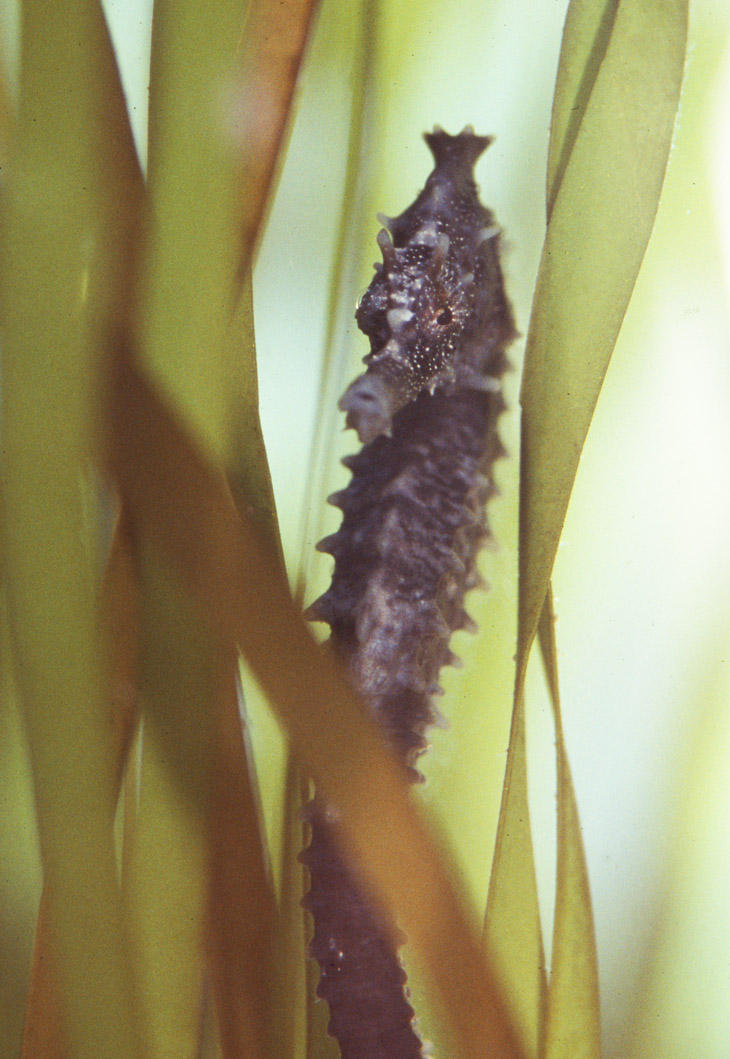
This week, we go back to 2005, and over to the North Carolina Museum of Natural Sciences in Raleigh. There, a seahorse posed enigmatically among the fronds of seaweed in an aquarium, with just barely enough natural light to pull off the shot wide open at f2.8.
I make no bones about it: true underwater photography is demanding. Just being down there generally takes a good amount of equipment, but then doing good photography takes no small amount more. Everything is different, and developing the skills is time-consuming and, so far, beyond my budget (especially since the only locales even worth the effort are far removed from where I am.) So, yeah, I’m cheating by shooting in an aquarium.
Yet, even then there are demands – not nearly as many as dive photography, but enough to make things challenging in a lot of different circumstances. Lighting is still an issue, since the available light in most places is inadequate, but using a flash unit isn’t very straightforward, from the glare that can reflect from the glass to the balance and diffusion of the light for best effect. Worse still is the simple trait of shooting through glass into water, because distortion occurs at even a minor angle from straight on, and bob help you if you’re shooting through curved glass. It’s easy to think, Oh, I’ll just shoot dead flat to the glass and eliminate the distortion, until you see how hard it is to get dead-on to the glass and how your subject doesn’t really line up as you’re doing it, and so on. I toss out a lot of stuff that I’ve shot in aquariums, just because the adverse effects are so prevalent.
So when you see something like this, it’s a lot less guaranteed than you might think, a select frame out of loads that never worked. The Aquatic section of my slide drawers is pretty sparse…



















































